How to Hone your Powers of Observation for More Engaging Sermons
We want to hold the listener’s attention when we preach.
If their attention turns away and they don’t hear what we say, they miss hearing the Good News in our message.
Moreover, we don’t just want them to hear the Good News, we want listeners to experience it for themselves so that they are transformed.
One important aspect of holding the listener’s attention and creating an experience is by including sensory details that convey emotions and a story.
However, we often don’t include such details because scripture doesn’t provide those details to offer, and we don’t know how to find details to include.
One way to solve this problem is through the practice of deep observation.
The following exercise is adapted from Twyla Tharp’s book, The Creative Habit: Learn It and Use It for Life (Simon & Schuster, 2003. E-book ed., pp. 49-51).
Step 1: Find two people Interacting
Head to a coffee shop, restaurant, park, or the hallway of a mall or local government building.
Notice two people who are interacting. It’s best if you don’t know the people you’re observing.
You don’t have to get close enough to hear their conversation, but if you are you can quote or paraphrase.
Have a notebook or recording device to capture your thoughts.
Step 2: For five minutes, observe and list up to 20 things they do
Watch the pair for 5 minutes.
Write down everything you notice. For example:
How do they move their hands? Their head?
What are their facial movements: how do they move their mouths, eyebrows, and cheeks?
How is their hair cut? Do they stroke their facial hair?
Do they lean towards or away from each other?
Is their tone of voice friendly or angry?
Who listens more?
How are they responding to the temperature? Does anyone sweat or pull a sweater tighter around them?
Do they study a menu, an ant scurrying on the ground, or each other?
How do they swallow? Do they gulp or guzzle? Blow on something hot or take a tentative sip?
How do they chew?
How do they hold a fork and knife? How do they hold a pen or pencil?
How are they dressed?
Do they touch each other? If so, how?
Step 3: Create a story about their relationship
You’re probably already creating a story while you observe them, and probably there’s one kind of relationship that jumps out as the most obvious:
First date? Long-married couple? Mother/daughter? Friends catching up? Colleagues between meetings? Financial planner with prospective clients?
But don’t stick necessarily with the obvious. Imagine other possibilities, too.
For example, the most obvious relationship might be that the couple is dating or married.
However, another possibility is that they are colleagues.
Or, you might observe an adult with a child and assume the adult is the child’s parent. But the adult might be an aunt or uncle, a case worker, or the nanny.
If the couple were not in the most likely relationship, how would that influence your interpretation of their actions towards each other?
Choose one of the possible relationships and write a very short story in your head, on paper, or by dictating into your smart device.
Be sure to include some of the details you noted.
Steps 2 and 3 are like practicing musical scales by expanding our powers of observation and creative imaginations.
Step 4: Choose another two people.
Over the next five minutes list up to ten things you find interesting about their interaction.
First note the interesting actions or conversation (if you can hear them).
Once you have about ten, look over the list and note why you find it interesting?
A detail is interesting because it connects with us in some way.
In some way it reflects us and who we understand ourselves to be, uniquely.
We find resonance or dissonance through something their interactions remind us of: what is that reminder?
What memories and emotions does it evoke?
What might their interactions make us long for that we never received?
Step 5: Write a very short story about the second couple.
Choose one or two of the emotions that their interaction evoked and what you observed of their behaviors that brought them out.
Write or dictate a very short story that focuses on that emotion and behaviors.
Step 6: List at least three biblical stories where that emotion is evoked
Consider the biblical stories in which this emotion is prevalent.
In your sermon preparation files about that story, add the story you wrote.
Your story might get used as a sermon illustration, or at the time of writing the sermon, your story might remind you of another one from a book, movie, or the news that you could apply.
When you write the sermon illustration, include the sensory details that evoked those emotions.
In your file, you might also add tags that name the emotions so that you can find them for future reference to be used as-is or adapted for other sermons or purposes.
Use details & emotions to create a sermon experience
By practicing our powers of observation, connecting behaviors to emotions, exploring short bursts of creative writing, and creating files for future reference, we’ll be able to apply details that tell a story of Good News our listeners will not only hear—but experience.
Do you have a preaching community to support and inspire you?
The Collective+ is your go-to community for all things preaching
Exegetical resources. Sermon workshops. Guest speakers. Long-term sermon planning. Spiritual renewal events. All in a community of like-minded preachers dedicated to learning and growth.

